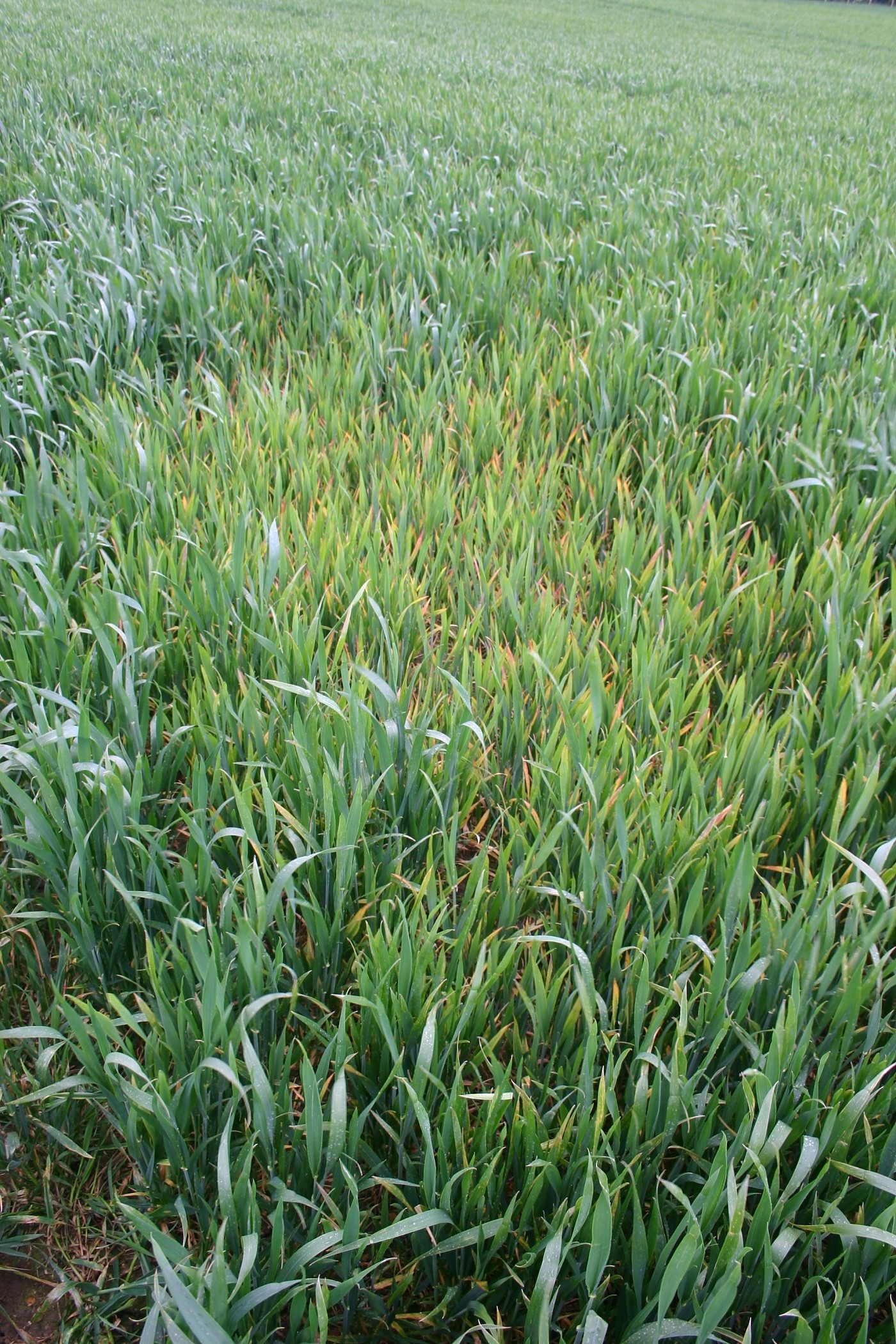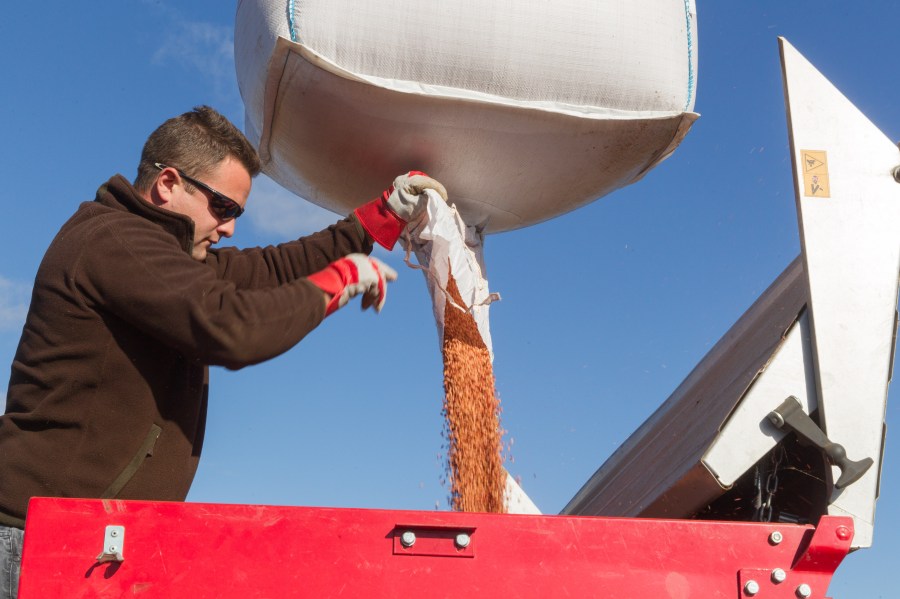First line of defence against BYDV may need backup if another warm autumn prevails. CPM find out why BYDV has been so prevalent in 2016.
The difficulty with BYDV control is that its a persistent virus and once infected, an aphid has acquired it for life.
By Lucy de le Pasture
It’s been the worst year in living memory for BYDV in some regions and it’s come as no surprise after a mild start to the winter and aphid activity widely reported in crops as late as December. But it also proves the point that fighting a rear guard action is too late where BYDV is concerned and last year it certainly stole the march and crept through grower defences
Tim Nicholson of Bayer has seen high levels of BYDV in the Bayer trial site at Starcross, Devon and along the south coast and explains why 2016 has been such a damaging year. The story starts with the aphid vectors of BYDV and their biology.
Main Vectors
“There are two main vectors of BYDV – bird cherry aphid and grain aphid. Bird cherry aphid migration is normally during Sept and Oct, coming to a halt as weather cools below the aphid flight threshold of 11⁰C,” he says.
“Autumn 2015 had above average temperatures (4⁰C above the long term average in Dec and the hottest Dec since 1934) which meant there were more days for aphid flight and also perfect conditions for aphid reproduction, which need temps above 3⁰C.”
The difficulty with BYDV control is that it’s a persistent virus and once infected, an aphid has acquired it for life. It

Virus spread can happen very quickly and foliar insecticide treatments can be a little after-the-event to help prevent it.
takes 16-24hrs feeding for an aphid to pick up the virus and just 4-8hrs feeding to pass it on. That means virus spread can happen very quickly and foliar insecticide treatments can be a little after the event to help prevent it.
Autumn 2015 broke all the rules of averages and the t-sum 170 on a crop treated with Deter (clothianidin) occurred about a week earlier in Wimborne, Dorset and two weeks earlier at Starcross. Only a few frosts, that weren’t particularly severe, occurred and very unusually there were 40 days during Dec and Jan when temperatures were suitable for aphids to fly, he says.
Late BYDV foci
In Tim Nicholson’s opinion, it was aphids flying in Dec, then perfect temperatures for reproduction in Dec and Jan, that led to the late BYDV foci that were visual in some Deter-treated crops in the spring that hadn’t had follow up pyrethroid treatment.
“Temperatures didn’t dip below zero until about 21 Nov for 2-3 days along the south coast. They dipped a fair way below the LT50 (lethal temperature to kill 50%) for bird cherry aphids (-0.5⁰C), though aphids burrowed in the base of the plant in leaf folds can survive. More cold-tolerant grain aphids (-8 ⁰C frost needed for LT50) were unaffected,” he explains.
“With bird cherry aphids, perhaps a high number survived the cold nights around 21 Nov and flights certainly continued for the rest of Nov and in Dec. What’s more, a very warm Dec and Jan were ideal for reproduction and virus transmission.
“The grain aphids had a higher than average flight during late Oct and Nov and, being more cold tolerant, wouldn’t have been killed by the frosts. They then had perfect conditions to reproduce throughout Dec and much of Jan. Any pyrethroid follow-up sprays wouldn’t have had much effect on grain aphid.”
It’s the nature of aphids and BYDV transmission that make Deter an excellent start to a BYDV programme, particularly protecting against early infection, which is the most damaging, reckons Tim Nicholson.
“Deter can give 8-10 weeks’ activity drilled in mid-Sept, before a well timed pyrethroid spray will be needed. And if the crop is drilled from the last week of Sept onwards with an appropriate seed rate (125-150kg/ha), Deter may provide the total solution in many parts of the country in most seasons, as it has more persistence with later drilling and higher seed rates,” he notes.
Additional follow-up
But with both drilling date scenarios, depending on seed rate, period of aphid flight, winter temperatures and amount of volunteers and grass weeds in the crop, an additional follow up pyrethroid spray may be necessary, he advises.
“In years with very warm autumns, a follow-up pyrethroid spray, regardless of drilling date, will also remove aphids that have lodged up on volunteers and grassweeds within the crop so that they don’t move over to the Deter-treated crop when the Deter runs out of steam,” he says, adding that if grain aphids are present in high numbers, the pyrethroid spray may not be reliable.
Tim Nicholson suggests that if very warm winters become the norm, then consider later drilling so that Deter is still active in the plants through the late autumn, when the more cold-tolerant but pyrethroid-resistant grain aphid may still be active or where the more common bird cherry aphid is active but conditions aren’t conducive to travel with the sprayer.
And for those not using Deter, be aware that with recent and future pyrethroid spray re-registrations, new aquatic buffer zones can be up to 18m and arthropod buffer zones of 5m must be maintained next to non-cropped land, he points out.
Gout fly damage
Along with the worst BYDV year many agronomists have seen, there has also been a significant amount of gout fly damage this season. Although a gout fly only affects one tiller, if there are many gout fly about then multiple tillers will be affected.
Once eggs have been laid around late Sept, there’s a 7-10 day window before they hatch and travel out of reach of foliar chemical control, so the eggs need to be controlled with a pyrethroid before then.
Given the importance of reducing resistance pressure on pyrethroids and protecting beneficials, the cultural control of delaying drilling and the chemical control of a Deter seed treatment are ever more important, believes Catherine Barrett of Bayer.

Deter gives a useful level of gout fly control which means you have one less thing to worry about, notes Catherine Barrett
“Gout fly control is a not on the Deter label but work done by Bayer [2008] found a mean reduction of 77.9% in gout fly infested tillers when Redigo Deter was used compared with straight Redigo (prothioconazole),” she says.
At the Bayer summer demo site in Hambledon, Hants, an area was drilled on 20 Sept to assess fungicide performance. The varieties section was drilled later, on 12 Oct. “The difference in gout fly infestation between the two areas was significant. So reducing vulnerability to gout fly is another of the many agronomic reasons to delay drilling.
“The gout fly damage was the worst we’d ever seen and we were concerned about the viability of part of the site full of stunted swollen plants. But by April-May the site was looking extremely well as the plants had compensated by putting out extra tillers,” she notes.
“Since you get a useful level of gout fly control with Deter and it’s a necessary choice in many areas due to BYDV pressure, using Deter seed treatment means you have one less thing to worry about.
“Pyrethroids may be needed in spring wheat at ear emergence. Culturally spring wheat should be drilled early so plants are as strong as possible, although the weather often puts a spanner in the works,” she says. “But by reducing the gout fly population in winter wheat, the pressure on spring wheat is reduced.”
BYDV Cultural Control
- Destroy the ‘green bridge’ before preparing the seedbed.
- Leave at least five weeks between ploughing and sowing the new crop.
- Consider applying a desiccant herbicide if cultivation to sowing interval is less than five weeks.
- Delay sowing – a week can reduce spread by half, according to AHDB.




